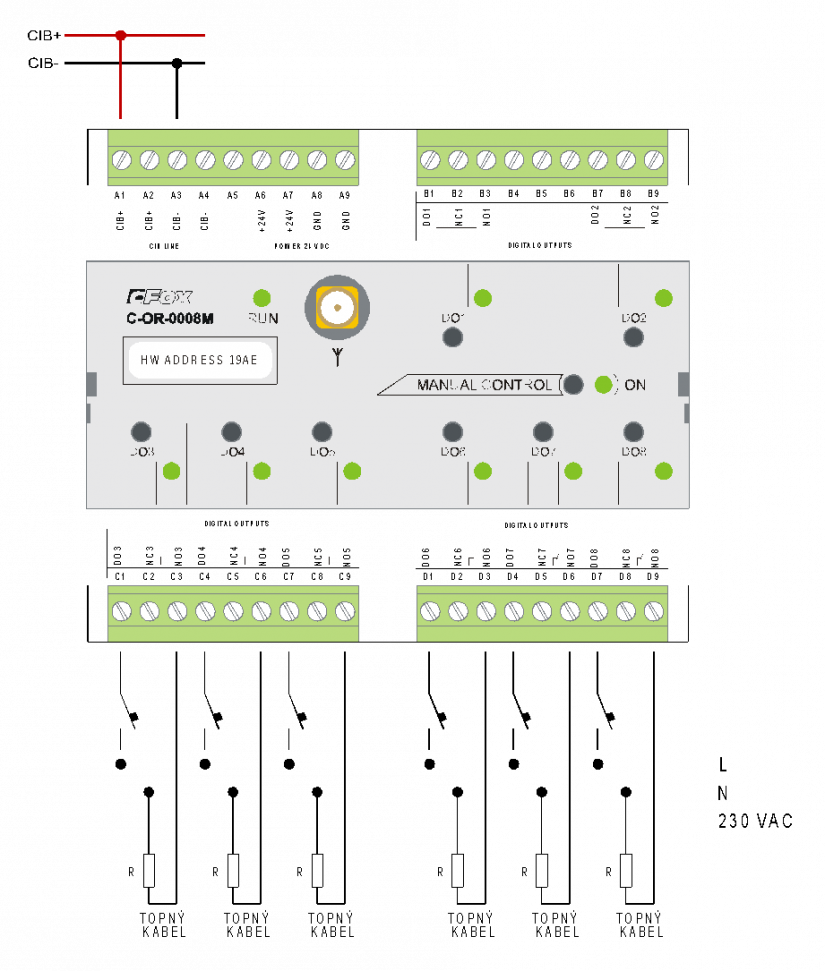The direct electric underfloor heating can be designed similarly to hot water underfloor heating. The heating elements are in this case electric heating cables (the installation is similar to hot water systems), heating mats (a more convenient installation), and heating foils (under floating floors, etc.). All variants are equivalent from the perspective of control. Standard installation systems are fitted with 60 to 100 W/m2 (for bathrooms up to 160 W/m2), the switching power for each individually controlled part of the installation is based on the total area and the electrical connection.
Depending on the installation, fast temperature increase is an advantage, and it is possible to make better use of controlling room temperature in relation to time and other conditions.
The heating cables or heating mats are switched by relay outputs in accordance with the switching power.
You can make use of the relay output directly to the flush box (C-OR-0202B with a possibility of simultaneously measuring the floor temperature), or the C-OR-0008M module, which can switch up to 8 branches and can be placed in the distribution cabinet next to circuit breakers of individual heating branches. The module can also be used in the RFox design under the name R-OR-0008M, it can be powered from a 24 VDC supply (e.g. DR-15-24) and the RFox wireless network can be used for communication.
Very exceptionally a higher power needs to be switched; in that case, either an external contractor switched by the Foxtrot system relay output can be used, or - if the load can be divided into several outputs - e.g. two 16 A relay outputs can be used and each part will be switched by an individual output.
In standard installations it is necessary to monitor the maximum floor temperature; installing a floor temperature sensor allows you to measure the temperature and ensure compliance with the maximum of about 29 °C in the living quarters, 33 °C in the bathrooms and up to 35 °C in the floors around the swimming pool.
Suitable sensors for measuring floor temperature are listed in this article, where detailed information is presented on the assembly and placement of the temperature sensor in the floor.
The temperature in a heated room is measured either by an independent temperature sensor located on the wall, which is usually included in the design of electrical installation elements (switches, sockets) in the room.
Or you can use a control unit with a display, which also measures the ambient temperature, and it is also connected with the floor temperature sensor.

Fig. 1. An example of electric underfloor heating controlled by the C-OR-0008M module.
Notes:
-
The protection level must correspond with the power output of the heating branches, maximum 16 A per branch.
 English
English